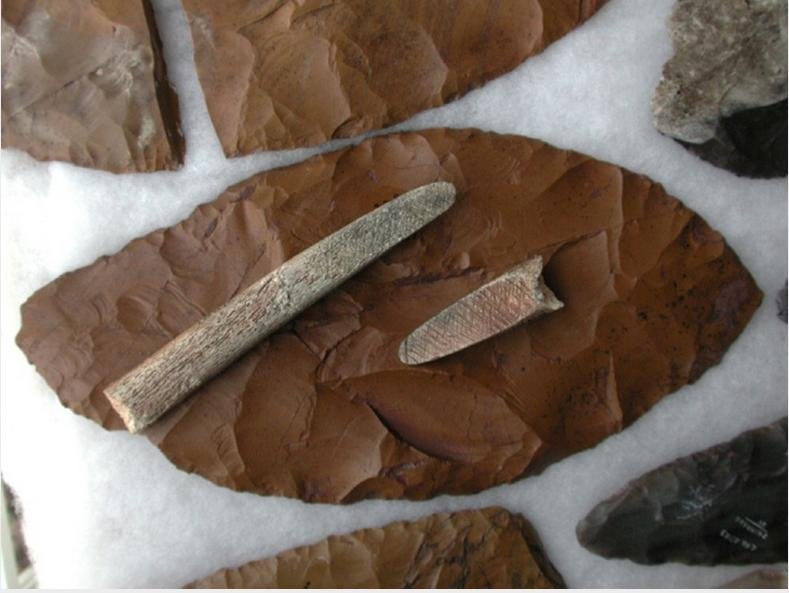Humans from the Clovis culture used characteristic stone points (brown) and rod-shaped bone tools. (Nature/Robert Walker)
LIVINGSTON, Mont., Feb. 13 (UPI) -- The ancient remains of a baby boy buried in Montana some 13,000 years ago may have finally provided a genetic link between our human ancestors in Asia and the earliest Americans.
The DNA of a toddler member of the Clovis culture, which thrived during a brief but prolific period of American prehistory, showed remarkable similarity to the genes of Native Americans throughout the Western Hemisphere, according to a new study in the journal Nature.
"So this strongly suggests that there was a single migration of people into the Americas," said Michael Waters, an archaeologist at Texas A&M University involved in the study. "And these people were probably the people who eventually gave rise to Clovis."
The child's skeleton is the only known human remains from the Clovis culture, and until his genome was sequenced in this study, archaeologists had to rely on artifacts such as stone and bone tools to piece together the history of human migration from Asia across the Bering Sea to the Americas.
The study seems to disprove a long-held theory that the Clovis people, whose artifacts have been found from Washington state across the U.S. to Florida, descended from European ancestors, and makes clear that the descendents of the Clovis culture lived on, even to today.
Still, what happened next remains a mystery.
"We have no idea exactly where the U.S. fits in this pattern," said Eske Willerslev, of the University of Copenhagen, who led the effort to have the Clovis boy's genome sequenced. "And to be completely honest, we have no idea how they actually moved through time, these different groups throughout the continent. In order to answer that question there's only one way to go, and that is sequencing more genomes from ancient remains."
[Nature]
[NPR]















